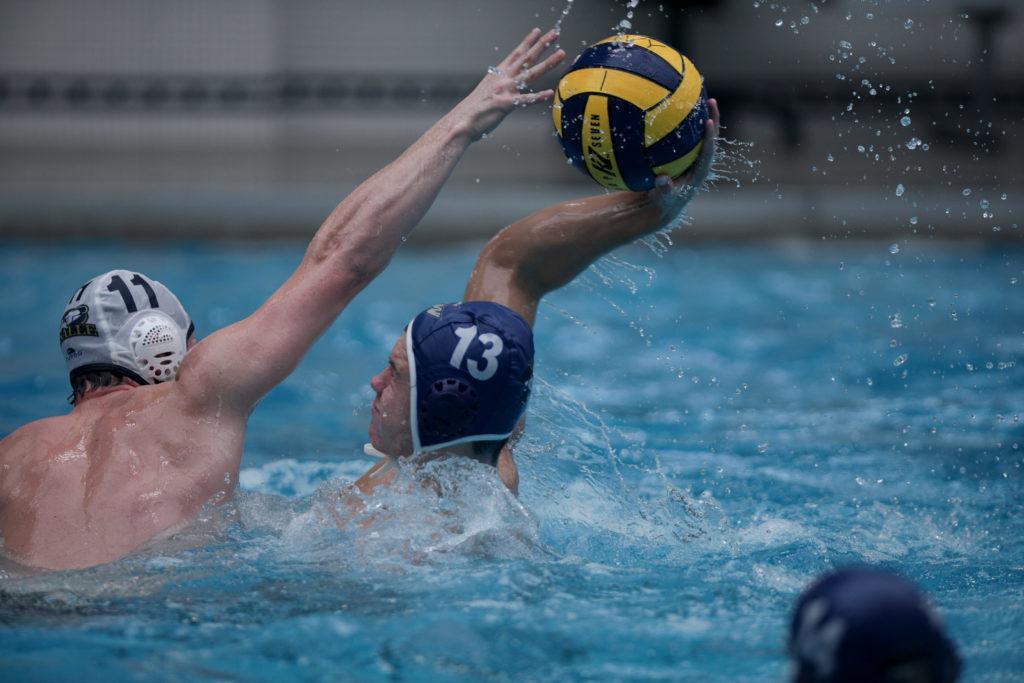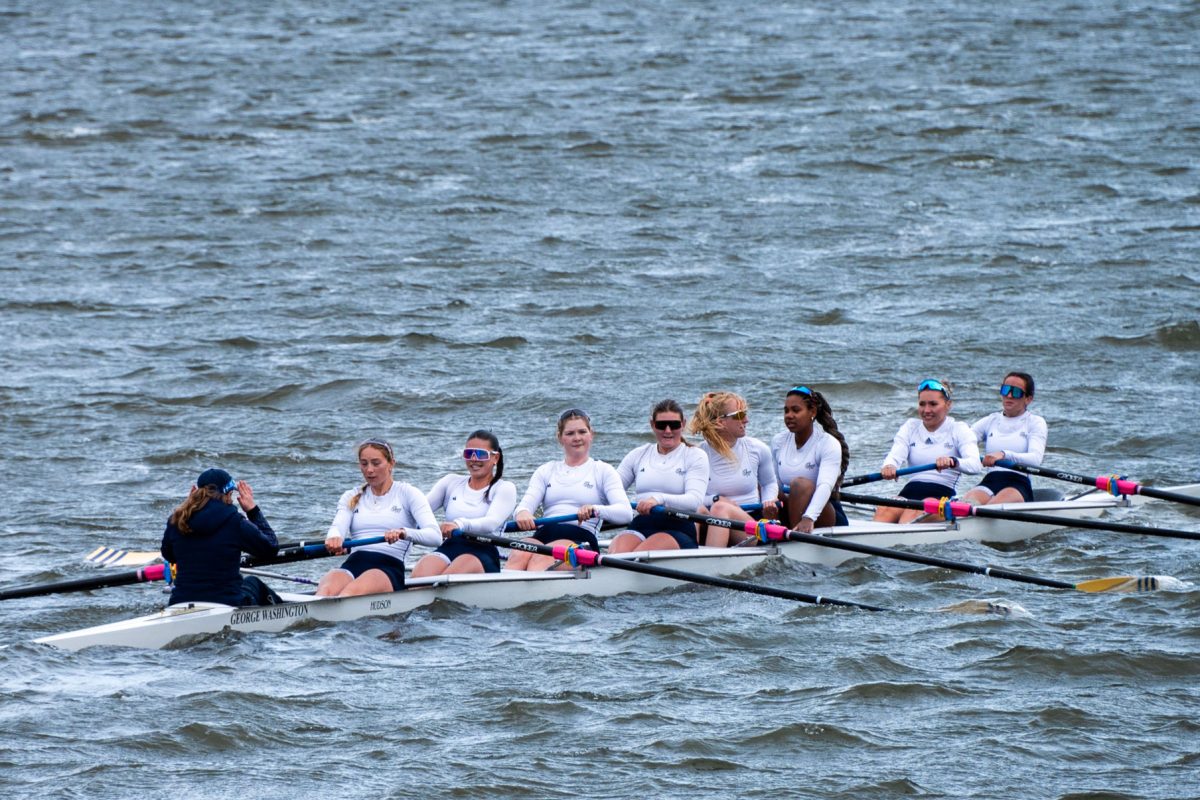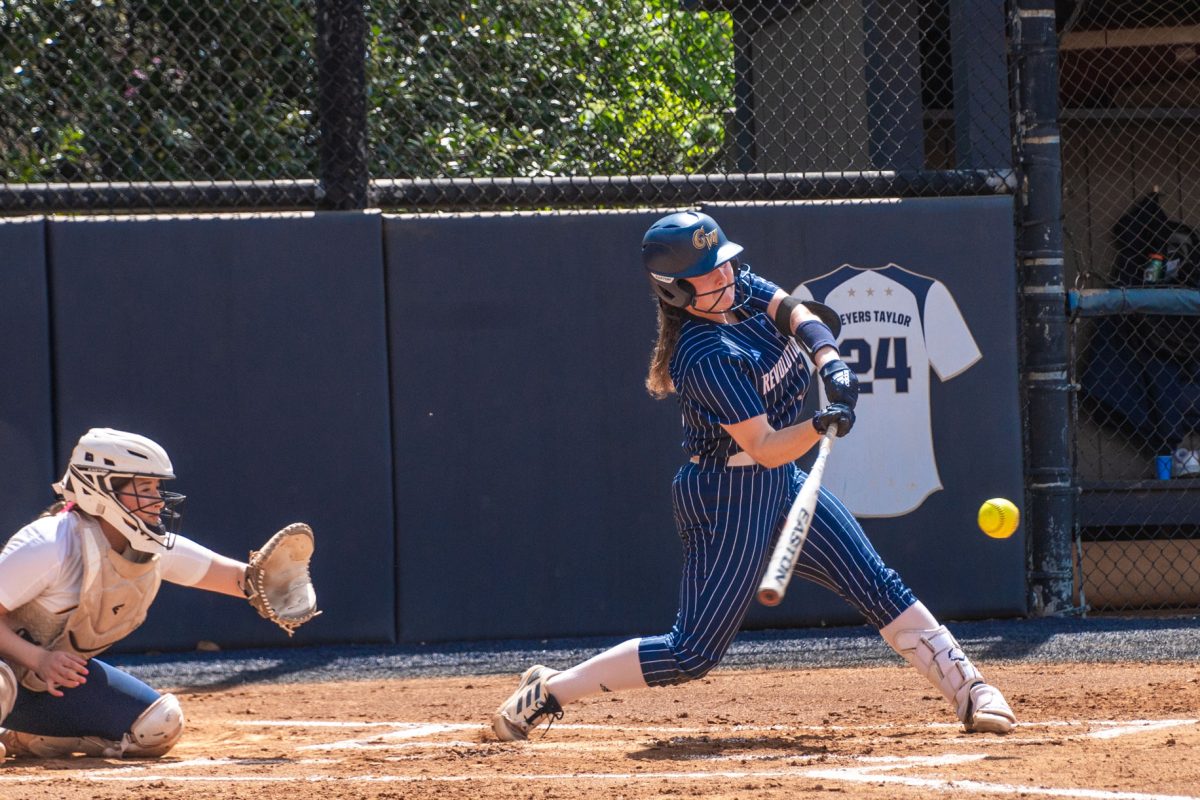Men’s water polo nabbed its second consecutive conference championship and earned its winningest season last year, but the squad is not the only one in the conference climbing the ranks.
After the Collegiate Water Polo Association split into two smaller conferences in 2016, players and coaches said GW and its Mid-Atlantic-East competitors have leveled out the playing field and heightened themselves in competition. The Mid-Atlantic-East’s seven teams – GW, Navy, Bucknell, La Salle, Johns Hopkins, Wagner and Fordham – have continuously tightened the margin of victory in the conference, players said.
The former 18-team CWPA restructured into two distinct conferences two years ago with separate pathways to earn an NCAA bid, splitting into the Mid-Atlantic-East and the Northeast Region.
Harvard, Princeton, St. Francis Brooklyn College, Brown, MIT and Iona were grouped into the Northeast Water Polo Conference. GW, Navy, Bucknell, La Salle, Johns Hopkins, Wagner and Fordham comprise the Mid-Atlantic-East.
Head coach Barry King said the restructuring gave teams a better chance at a championship berth because it evened the distribution of power in the conferences. Teams that lack historical success, like Bucknell and Fordham, have more opportunities to advance in a smaller field and are more attractive to potential recruits because they can shine in competition, he said.
King added that the Mid-Atlantic-East teams are in a better recruiting position, because they no longer compete with historically dominant teams like Harvard and Saint Francis for the same championship spot.
“Because of that split, then somebody who’s considering coming to school at one of our institutions now knows that we have to go through those institutions, instead of those institutions plus Princeton, Harvard, Brown and Saint Francis,” King said. “The opportunity to play for a championship is a powerful attraction to players.”
King said he focuses on recruiting and wants the Colonials (13–4) to be competitive against West Coast schools, which have dominated NCAA championships for more than a decade. Seven members of GW’s 18-man team hail from California this season.
“We want to be in the mix for people who aren’t just considering coming to the East,” King said. “We want to be in the mix for qualified student-athletes and recruit against UC San Diego and Davis and Santa Barbara, Irvine. And if we are, then we’re going to be doing nothing but getting better.”
Since the split, GW’s overall winning percentage jumped from .267 in 2015 to .577 in 2016, the first year under the new system. The Colonials have posted a better record each year since then and are currently riding their best winning percentage in more than 20 years.
Every Mid-Atlantic Water Polo Conference East team, with the exception of La Salle and Johns Hopkins, has experienced a general increase in its overall winning percentage since the conferences divided in 2016.
Navy head coach Luis Nicolao said more international recruits have joined the team and bring their experiences playing abroad to the Mid-Atlantic-East, which increases the diversity of talent in the conference. GW’s squad includes five international players – more than a quarter of the team.
Nicolao added that recruits typically play water polo year-round, a recent development in the sport that he said elevates the skillsets of incoming players.
“Kids we recruit now are all playing year-round polo,” Nicolao said in an email. “That was not the case 20 years ago. The level of play we see from freshmen now is very high.”
Fordham co-head coach Brian Bacharach said some recruits are drawn to Mid-Atlantic-East schools because they may see more action than in West or Northeast programs.
“There are a lot of athletes that want to continue playing at the next level and playing for an East Coast program in a league with high level team seems like a fun opportunity versus possibly sitting on a bench in California or not playing at all,” Bacharach said in an email.
Graduate student goalkeeper Matt Taylor said the increased quality of competition raises the stakes of every game. He said the team’s opponents have consistently pushed players to train harder and placed a greater emphasis on “refueling, stretching and getting treatments” to be ready for a must-win game.
“Day to day, you have to treat your season more professionally,” Taylor said. “It’s not just six or seven games in the year we have to prepare for, there’s 20 to 25 games.”





